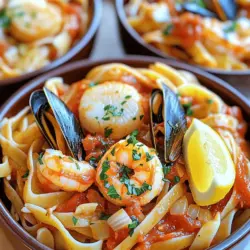
The Best Seafood Pasta Recipe
Dive into the flavors of the ocean with the best seafood pasta recipe! This delightful dish combines linguine, shrimp, mussels, and scallops in a rich tomato sauce, perfect for a quick weeknight dinner or special occasion. Easy to make and bursting with fresh ingredients, it's a seafood lover's dream. Ready to impress?